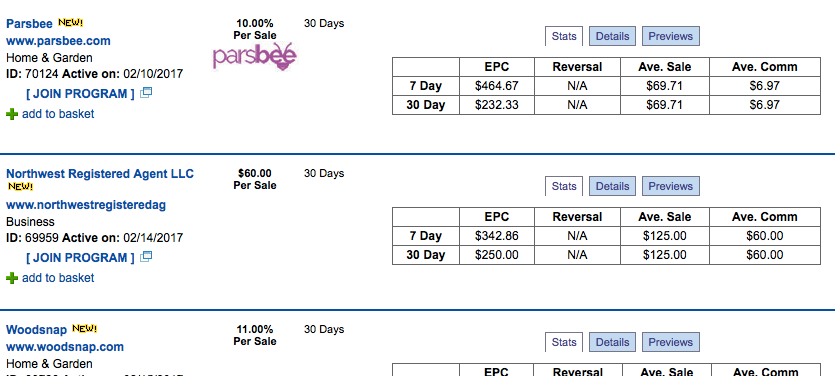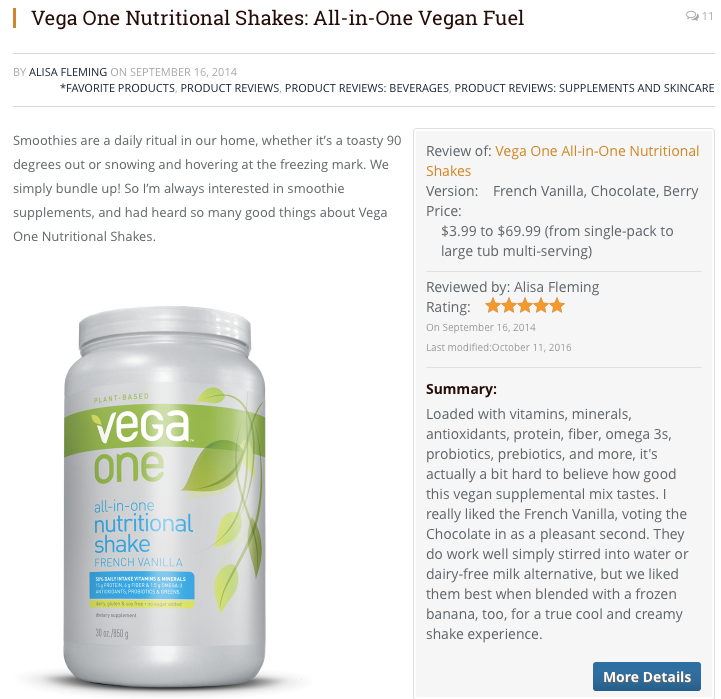How To Make Money On Your Blog With Affiliate Marketing
Does the idea of making money through your blog sound like an amazing idea? You invest so much time, energy and passion into writing amazing blog posts; so wouldn’t it be great to actually earn an income from what you’re already doing for free?
Affiliate marketing is one of the primary methods website and blog owners use to generate revenue. In case you’re not familiar with what affiliate marketing is, here’s the skinny: When you sign up with an affiliate program (perhaps the most well-known program is Amazon’s), you receive special links you can cut and paste onto your blog. Every time someone clicks on one of these links and then purchases a product, you receive a percentage of the sale; commonly referred to as a commission.
It’s that simple!
If this sounds intriguing to you, you’ll definitely want to keep reading. This article will walk you through exactly how to make money on your blog with affiliate marketing.
Step 1: Set up your blog and add great content
If your blog is already up and running, you can skip ahead to step two. If not, I’ve created a step-by-step guide that will walk you through the super-simple process of setting up your blog today: How To Start A Blog In 30 Minutes Or Less.
Note: I highly recommend taking a couple of months to add great content and build your social media following before you start trying to monetize your blog. This will allow you to build trust with your audience before you start trying to sell something! And once you’re ready to dive headfirst into affiliate marketing, the next four steps are waiting for you!
Step 2: Find an affiliate program or network
You have two main choices when it comes to partnering with affiliates: either sign up to become an affiliate for an individual company, or sign up with an affiliate network. I recommend doing both!
Signing up with an individual company will allow you to promote that company’s products or services. You sign up once, and can then promote specific products or the company as a whole.

Example of a company affiliate program (Trenz Shirt Company)
Signing up with an affiliate network, on the other hand, will mean you’re able to become an affiliate for any of the companies that network represents.

Affiliate networks like ShareASale let you search for and sign up with any of the companies they represent
The vast majority of affiliate programs and networks require a simple application process to ensure they’re only partnering with high-quality sites. Most won’t care if you have low levels of traffic, as long as you regularly add great content to your site.
Regardless of whether you sign up with an individual company or affiliate network (or both) it’s super important that you keep your standards high. I recommend only promoting products or companies you have personal experience with and would heartily recommend to friends and family.
You may have noticed that one of the affiliates I promote on my blog is web hosting company, Bluehost. We used them for our own web hosting for YEARS before we decided to enter into an affiliate relationship with them. This gave us the confidence to be able to recommend them wholeheartedly, knowing our readers would love them as much as we do!
To find company-specific affiliate programs in your niche, try the following Google searches:
- Your niche + affiliate program (e.g., pet product affiliate program)
- Niche product + affiliate program (e.g., “dog bed” affiliate program)
- Keyword + affiliate (e.g., dog affiliate).
- Keyword + affiliate program (e.g., dog affiliate program)
- Keyword + affiliate product (e.g., dog affiliate product)
- Product name + affiliate: If you already have a product in mind, try combining it with ‘affiliate’ or ‘affiliate program’ to see if anything pops up.
Tip: If you put quotation marks around a phrase, Google will return an “exact match” for your search term. For instance, if you want your search to reveal only dog bed affiliate programs – and not regular bed affiliate programs – make sure you put quotation marks around “dog bed”.
If you want to go the affiliate network route, here are some of the most popular ones:
Amazon Associates: While Amazon offers some of the lowest commission rates, it’s also the simplest program to use. Signing up is easy, and because they offer so many products, you’re sure to find ones that appeal to your audience. Also, the more products you sell, the higher your commission rate!
CJ Affiliate: This is the program formerly known as Commission Junction. It’s one of the most established programs out there.
ShareASale: A huge selection of merchants to choose from, in every niche you can imagine.
Clickbank: Specializes in digital products. Digital products are great as they tend to give the publisher (you) much higher commissions than for tangible goods – sometimes the commissions even run as high as 80-90%!
e-junkie: Another outfit specializing in digital products like eBooks. These can offer up to a 100% commission!
Rakuten Affiliate Network: This is the network formerly known as LinkShare. This is another very established network.
*Keep in mind you may need to sign up for a free account before you can see a full list of stores or businesses that participate in each program.
Step 3: Add affiliate links or banners to your site
Once you’ve been approved as an affiliate for a particular company or network, you’ll be able to create affiliate links for your site.
When you’re getting started, there are three main ways you can use these links: replace current product links with your affiliate links, add new links within your content, or add affiliate banner ads to your site.
Here are a few examples:
- If I already have a blog post listing the top 10 swaddling blankets for babies, I could simply cut and paste an affiliate link for each of the blankets I mention
- In an existing post about how to cook a Thanksgiving turkey, I could add mentions of my favorite cooking tools (and use my affiliate links)
- I could add a “recommended products” list or widget to a post using affiliate links. This provides a great resource to my readers while also earning me some extra cash!
- I could add a banner ad to my blog’s sidebar promoting an affiliate product
All affiliate programs will have a place on their site where you can grab your affiliate links. Most programs will also have an affiliate manager you can contact if you run into trouble finding or using the links.
Another great place to add affiliate links is on your high traffic pages. Take a look through your analytics to see which pages get the most views, and add a strong call to action on those pages. For instance, if I have a post about how to find a WordPress theme, I might end it with something like this: “If you’re looking for an SEO-friendly theme, here is one I recommend.”
Step 4: Create a resource page or review post to promote your affiliate products
Two of the best ways to build up interest in your affiliate products are through resource pagesand review posts.
Resource pages are simply lists of useful products or services your readers would appreciate. Some examples could be “Top Resources For Small Business Owners”, “Top 10 WordPress Themes in 2017” or “Best Products For New Moms”.

Nomadic Matt provides a list of travel resources on their blog, many of which are affiliate links
The key to this strategy is to make sure you’re only promoting affiliate products you would normally recommend anyway. This will ensure you maintain your integrity, help your readers, and earn affiliate commissions all at the same time!
Review posts are simply blog posts that explain and promote a particular affiliate product. Some examples could be “The Best Camera For New Photographers”, “A Review Of Sony’s Play Station 4”, or “Why I Recommend Vega Nutritional Shakes”.

Go Dairy Free regularly offers reviews of their favorite dairy-free products
Step 5: Create an affiliate policy and be totally transparent
This step is SO important, but is one that often gets neglected. It’s not as exciting as the steps above, but not doing it can get you into BIG TROUBLE!
Here’s how: The Federal Trade Commission (FTC) requires all affiliate marketers to clearly disclose all affiliate links. This means that if you have affiliate links on your site, you MUST be transparent about it! FTC guidelines aside, this is just a smart business practice. The last thing you want is to deceive your readers!
Worried that clearly disclosing your affiliate links will hurt sales? Take a look at marketing guru Pat Flynn’s disclosure statement…and keep in mind he made almost $2 million last year, largely from affiliate sales!
I recommend having an official affiliate policy on your site, as well as disclosing affiliate partnerships on each page where you include affiliate links. This may seem like overkill, but you don’t want to risk losing the trust of your audience!
Final thoughts
I trust this post has given you some ideas for using affiliate marketing on your own blog. Keep in mind there are many ways to make money through your blog, and many work best when used together!
Here are some other ways you can start making money from your blog today:


Comments